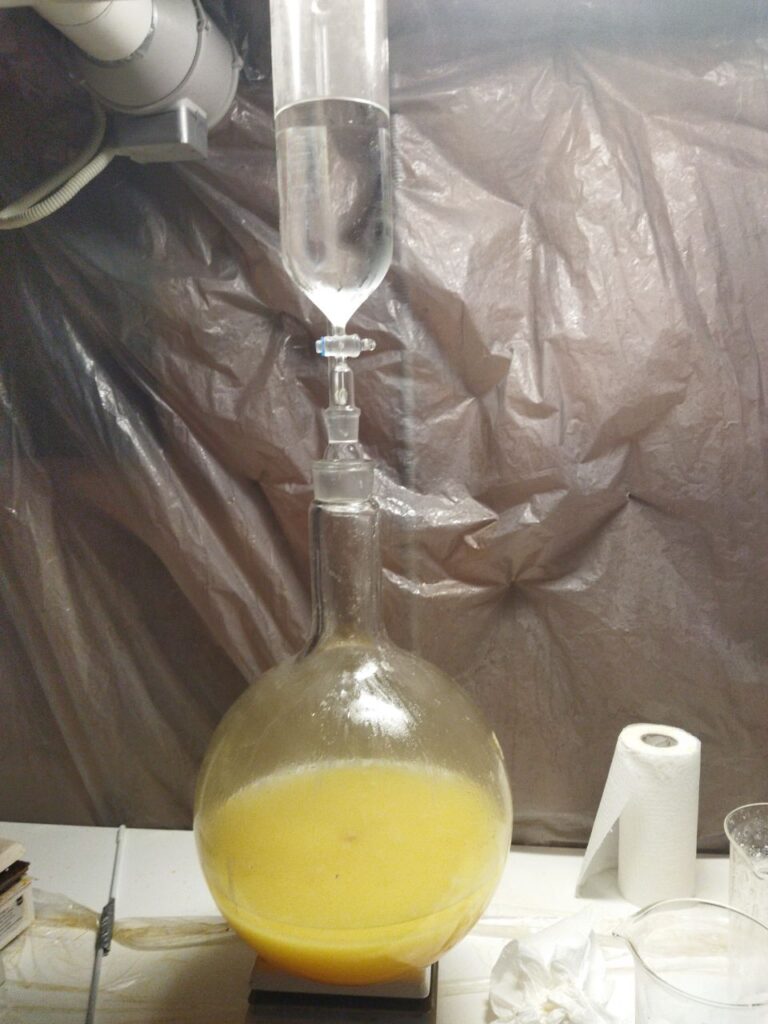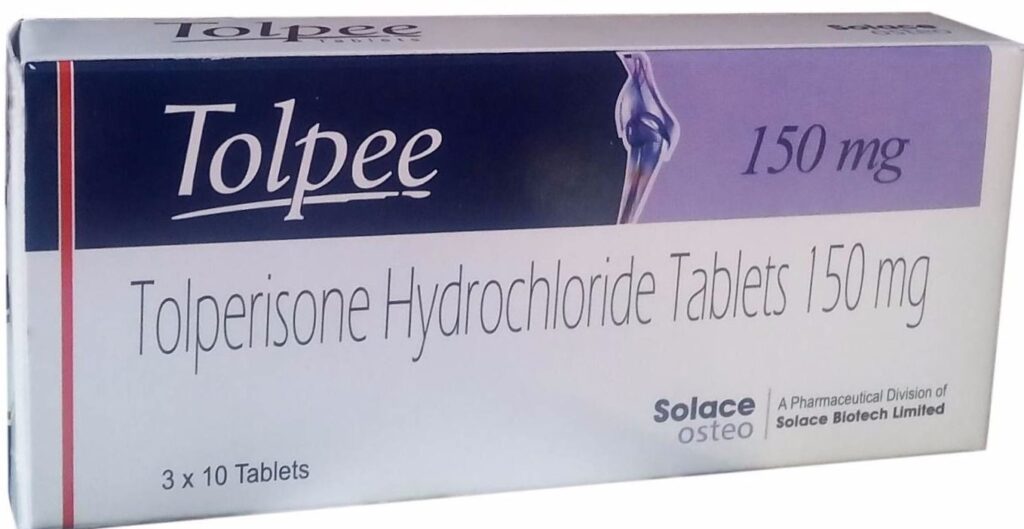- The process of creating a drug - May 23, 2023
- How do scientists model mental disorders in animals? - May 23, 2023
Introduction
4-Methylpropiophenone (CAS № 5337-93-9) is an organic aromatic ketone, characterized by a propiophenone structure with a methyl substituent at the para position. In an organic synthesis, 4-methylpropiophenone is a fundamental precursor for the synthesis of complex molecules by its reactive ketone group.
4-Methylpropiophenone (CAS № 5337-93-9), like propiophenone and its derivatives, have analytical and pharmaceutical applications as an intermediate in chemical synthesis. Because 4-methylpropiophenone can be used as an intermediate in the synthesis of 4-methylmethcathinone (4-MMC; mephedrone), this compound is highly regulated in many countries.
This article discusses the physical and chemical properties of 4-methylpropiophenone, its synthesis and chemical reactions, its uses and precautions.

Physical and Chemical Properties of 4-Methylpropiophenone
4-Methylpropiophenone (CAS № 5337-93-9), is an aromatic ketone that is propiophenone bearing a methyl group. Functionally it is similar to propiophenone. The chemical properties of 4-methylpropiophenone are provided by the benzene ring and carbonyl group. The carbonyl group gives ketonic characteristics to the molecule. The physical properties of 4-methylpropiophenone include its melting point, boiling point, density, and solubility characteristics.
4-Methylpropiophenone is an organic compound with the chemical formula C10H12O and a molecular weight 148.2 g/mol. This is colorless or light-yellow liquid, with a light sweet odor or odorless. Its density is 0.993 g/mL at 25 °C. 4-Methylpropiophenone have flash point 108°C, and boiling point 238-239 °C. Melting point of 4-methylpropiophenone is 7°C. Soluble in organic solvents such as chloroform and hexane, slightly soluble in water (0.332 mg/ml).
Synthesis of 4-Methylpropiophenone
4-Methylpropiophenone (CAS № 5337-93-9) can be synthesized by various methods. The following are general synthesis schemes; specific conditions may vary depending on the selected synthesis.
Oxidation Reactions
Oxidation reactions of 1-(4-methylphenyl)-1-propanol can yield 4-methylpropiophenone. Oxidants such as potassium permanganate (KMnO4) or chromium trioxide (CrO3) are commonly used in this reaction.

Another method is synthesis 4-methylpropiophenone from sodium p-toluenesulfinate. Sodium p-toluenesulfinate with Pd(O2CCF3)2, H2O, THF, MeCN and trifluoroacetic acid is heated by microwave radiation at 100 °C for 1 h.

The synthesis of 4-methylpropiophenone involves synthetic approaches, each of which offers unique advantages in terms of efficiency, selectivity and applicability to various starting materials.

Chemical Reactions of 4-Methylpropiophenone
4-Methylpropiophenone is an intermediate block in organic synthesis. This chapter explores the primary chemical reactions of 4-methylpropiophenone along with illustrative examples, highlighting its significance in the synthesis of compounds and materials.
Reduction Reactions
Reduction reactions enable the conversion of the carbonyl group in 4-methylpropiophenone to yield secondary alcohols, expanding its synthetic versatility. Common reducing agents include sodium borohydride (NaBH4).
Example: Reduction of 4-Methylpropiophenone with NaBH4 yields 1-(4-methylphenyl)-1-propanol, a valuable intermediate in pharmaceutical synthesis.

Halogenation Reaction
Halogenation is a common reaction used with this compound. The synthesis of 2-bromo-4-methylpropiophenone is easily achieved by simply brominating 4-methylpropiophenone with an equivalent amount of bromine, similar to the synthesis of bromo propiophenone. 4-Methylpropiophenone is dissolved in glacial acetic acid and bromine is added to form an oil fraction of 4-methyl-2-bromopropiophenone.
Example: Halogenation of 4-methylpropiophenone with bromine yields 2-bromo-4-methylpropiophenone, an intermediate in the synthesis of 4-methylmethcathinone (mephedrone).

The chemical activity of 4-methylpropiophenone includes a spectrum of transformations, each of which offers unique opportunities for the synthesis of valuable intermediates and target molecules. Using these chemical reactions and examples, researchers can explore the applications of 4-methylpropiophenone in pharmaceuticals, synthetic chemistry, and industrial processes.

Applications of 4-Methylpropiophenone
4-Methylpropiophenone like propiophenone and their derivatives have analytical and pharmaceutical applications, as an intermediate in the synthesis. It is also used as a photo radical polymerization initiator to provide a cross linkable vinyl polymer.
Pharmaceuticals
4-Methylpropiophenone is an intermediate in the synthesis of pharmaceutical compounds, contributing to the development of therapeutic agents and medicines. Its chemical structure enables the synthesis of various active pharmaceutical ingredients and drug intermediates.
Example: 4-Methylpropiophenone is used in the synthesis of tolperisone, a centrally acting skeletal muscle relaxant.
Specialty Chemicals
4-Methylpropiophenone finds applications in the production of specialty chemicals used in diverse industrial processes. It allows for the synthesis of specialty compounds with specific properties and functionalities.
Example: 4-Methylpropiophenone used in the synthesis of UV stabilizers and polymer additives, enhancing the performance of various materials.

- Health Effects of 4-Methylpropiophenone This chapter explores potential health effects of 4-methylpropiophenone for safe handling and use.
- Inhalation Exposure Inhalation of 4-methylpropiophenone vapors may lead to respiratory irritation, including symptoms such as coughing, wheezing, and shortness of breath. Prolonged or high-level exposure of 4-methylpropiophenone vapor in poorly ventilated areas may exacerbate respiratory symptoms and cause discomfort.
- Skin Contact Direct contact with 4-methylpropiophenone may result in skin irritation, redness, and dermatitis, particularly among individuals with sensitive skin or pre-existing skin conditions. Prolonged or repeated exposure of 4-methylpropiophenone may lead to skin sensitization and allergic reactions.
- Eye Contact Contact with 4-methylpropiophenone vapors or liquid may cause irritation, redness, and discomfort in the eyes. Immediate rinsing with water and medical attention is recommended in case of eye exposure to prevent further irritation or damage.
- Ingestion Ingestion of 4-methylpropiophenone is unlikely to occur due to its low volatility and non-food application. However, accidental ingestion may lead to gastrointestinal irritation, nausea, vomiting, and abdominal discomfort. Immediate medical attention is necessary in case of ingestion to prevent potential adverse effects.

Safety Precautions
This chapter discusses essential safety precautions for handling 4-methylpropiophenone in laboratory and industrial settings.
Personal Protective Equipment (PPE):
Protective Clothing: Wear lab coats to prevent skin contact with 4-methylpropiophenone.
Eye Protection: Wear safety goggles or a face shield to protect the eyes from splashes, vapors, or accidental exposure.
Hand Protection: Wear chemical-resistant gloves, such as nitrile or neoprene gloves, to prevent skin contact and absorption of 4-methylpropiophenone.
Ventilation
Work with 4-methylpropiophenone in well-ventilated areas to minimize inhalation exposure to vapors.
Fume Hoods: Perform procedures involving 4-methylpropiophenone inside a chemical fume hood to remove any vapors generated during handling or reactions.
Storage
Storage: Store 4-methylpropiophenone in a cool, dry, and well-ventilated area away from heat, sources of ignition, away from strong oxidizing agents, acids, and bases to prevent potential reactions and hazards.
Conclusion
In conclusion, 4-methylpropiophenone is an organic aromatic ketone with interesting properties characterized by propiophenone with a methyl group. Its reactivity, chemical properties and diverse applications highlight its role in organic synthesis, pharmaceuticals, and polymers.
However, it is important to be aware of the potential health hazards associated with 4-methylpropiophenone exposure and take appropriate precautions and protocols to effectively reduce risks.

Bibliography
- 4-MMC (mephedrone) synthesis. Bromination in dichlormethane Jul 25, 2021 https://bbgate.com/threads/4-mmc-mephedrone-synthesis-bromination-in-dichlormethane.227/
- Mephedrone Precursor: Synthesis and Physico-Chemical Properties of 2-Bromo-4-Methylpropiophenone https://safrole.com/knowledge-base/mephedrone-precursor-synthesis-and-physico-chemical-properties-of-2-bromo-4-methylpropiophenone/
- Alkaloid induced asymmetric electrocarboxylation of 4-methylpropiophenone Shu-Feng Zhao, Mei-Xia Zhu, Kai Zhang Shanghai Key Laboratory of Green Chemistry and Chemical Processes, Department of Chemistry, East China Normal University, Shanghai 200062, China Tetrahedron Letters Volume 52, Issue 21, 25 May 2011, Pages 2702-2705 https://doi.org/10.1016/j.tetlet.2011.03.076
- Mephedrone (4MMC) crystallization Jul 25, 2021 Recreational Use of Mephedrone (4-Methylmethcathinone, 4-MMC) with Associated Sympathomimetic Toxicity, David M. Wood, Susannah Davies, Malgorzata Puchnarewicz, Jenny Button, Roland Archer, Hanna Ovaska, John Ramsey, Terry Lee, David W. Holt & Paul I. Dargan, Toxicology Observation, 01 April 2010, Volume 6, pages 327–330, (2010) https://doi.org/10.1007/s13181-010-0018-5
- ‘Smoking’ mephedrone: The identification of the pyrolysis products of 4-methylmethcathinone hydrochloride Pierce Kavanagh, John O’Brien, John D Power, Brian Talbot, Seán D McDermott 28 May 2012 https://doi.org/10.1002/dta.1373

